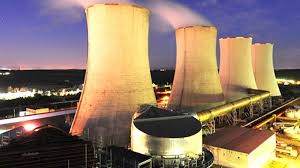Hwange Unit 7 to go off grid
Hwange Thermal Power Station’s Unit 7 is expected to be taken off the national grid for close to 30 days to undergo Class C Maintenance, a statutory procedure that requires the unit to be taken off the grid after running for a defined period.
With Unit 7 which has a capacity of 300 megawatts off the grid, the utility firm Zesa Holdings said the net effect is increased load shedding.
However, the authorities have assured the nation that they are working around the clock to implement measures aimed at reducing the severity of load shedding in the process boosting industrial productivity.
Hwange Power Station’s Unit 7 was first synchronised with the system on March 20 before it went through various stages of testing.
Since the end of March, Zimbabwe has been enjoying increased power generation.
In a notice, the utility firm said technical faults at Hwange Power Station has resulted in depressed power generation.
“ZESA Holdings would like to inform its valued customers that it is experiencing depressed generation owing to technical faults, which have recently happened at Hwange Power Station.
“This occurrence has resulted in increased load shedding.
“Furthermore, we wish to notify Stakeholders that the Hwange Unit 7, which was synchronised in March 2023, is scheduled to undergo Class C Maintenance, a statutory procedure that requires the Unit to be taken off the grid after running for a defined period. This work is expected to be completed within 30 days,” reads part of the notice.
On Wednesday (yesterday), Hwange Power Station produced 469 megawatts, Kariba contributed 700MW and independent power producers added 38MW bringing a total of 1 207MW.
On Tuesday, Hwange had 674MW, Kariba 540MW and independent power producers contributed 35MW.
However, on October 20, Hwange had 979MW, Kariba 4 444MW, and independent power producers added 39MW to 1 462MW produced.
Unit 7 is a component of the US$1,4 billion Hwange Unit 7 and 8 expansion project whose construction began in August 2018 following a ground-breaking ceremony by President Mnangagwa.
The Government successfully secured loan funding from China in 2018 and the project has been successfully implemented by a Chinese contractor, Sinohydro Corporation.
The project is a major success for Zimbabwe, as it fulfils one of the promises made by President Mnangagwa on improving the power supply in the country in line with the key aspirations of NDS1.
The project scope involved a power plant, which entailed the installation of two electricity generating units, each having a net output of 300MW, and the construction of two new 400kV substations (330kV Sherwood 400/330kV Hwange B Substation) a 400kV 310km transmission line from Hwange to Insukamini in Bulawayo.
Another 40km long transmission line has been established from Insukamini to Marvel in Bulawayo for the delivering of power.
This effectively leaves the Hwange Thermal Power station complex (Units 1-8) with an installed generation capacity of 1 520MW.
The transmission and distribution component of the project seeks to integrate Units 7 and 8 into the existing transmission infrastructure (national grid)
Despite intermittent faults, by adding 600MW of electricity to the national grid, the project has helped close the gap in the country’s power supply.-chronicles










